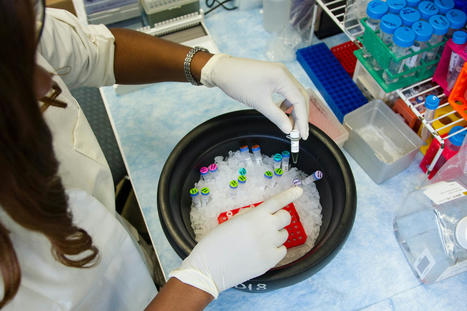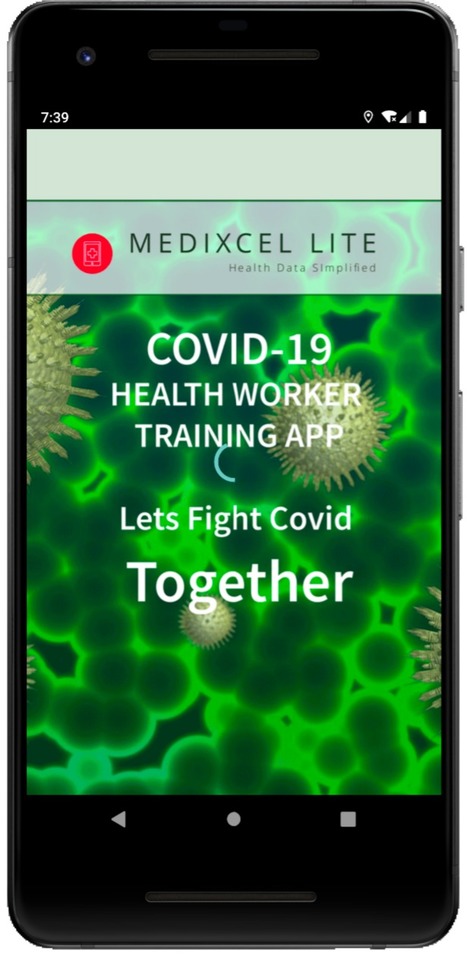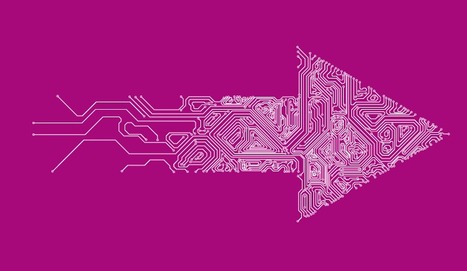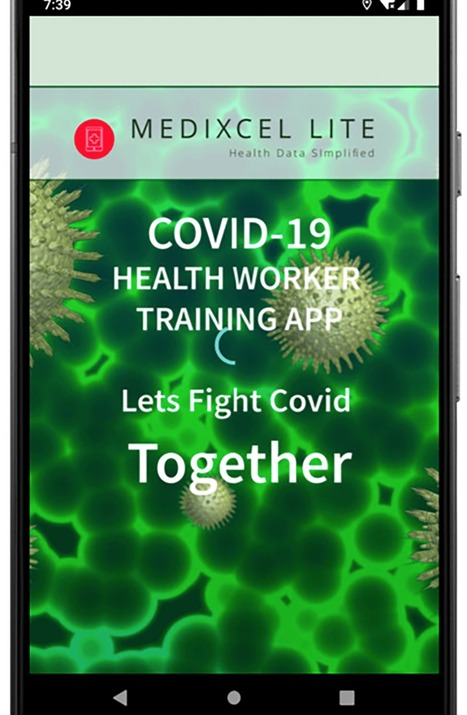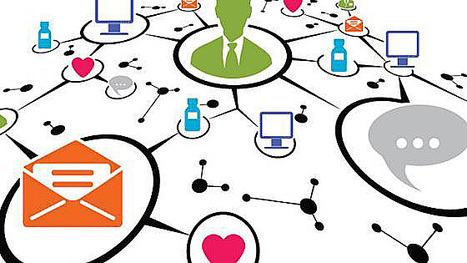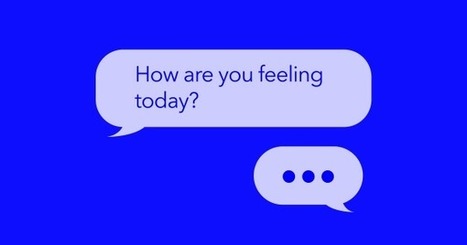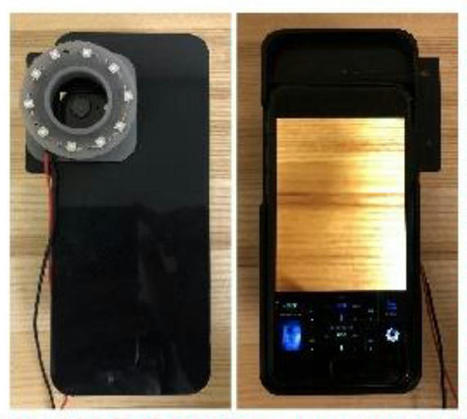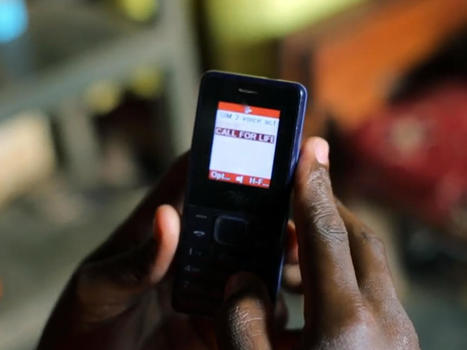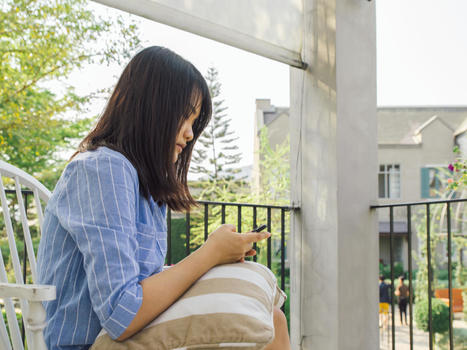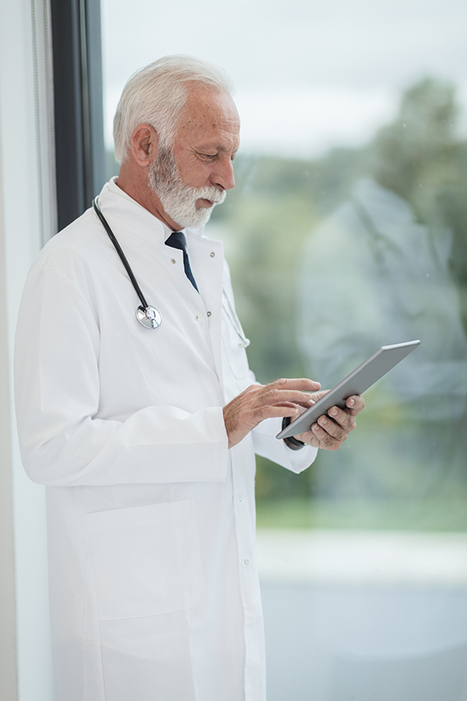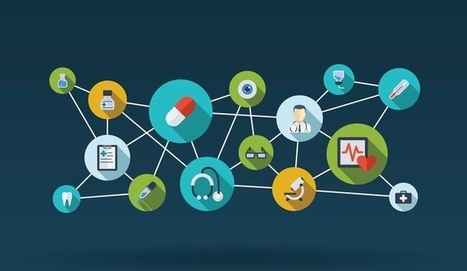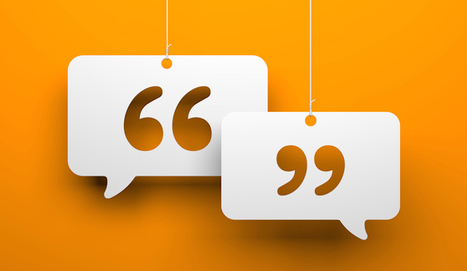 Your new post is loading...
 Your new post is loading...

|
Scooped by
nrip
|
Women with hormone receptor-positive, early-stage breast cancer who adhere to adjuvant endocrine therapy (AET) reduce the risk of cancer recurrence and mortality. AET, however, is associated with adverse symptoms that often result in poor adherence. We applied participatory action research (PAR) principles to conduct focus groups and interviews to refine and enhance a web-enabled app intervention that facilitates patient-provider communication about AET-related symptoms and other barriers to adherence. THRIVE app content reflects researchers’ partnership with a racially diverse sample of breast cancer survivors and healthcare providers and adherence to participatory design by incorporating patient-requested app features, app aesthetics, and message content. The app has the potential to improve AET adherence and quality of life among breast cancer survivors and reduce disparities in mortality rates for Black women by facilitating communication with healthcare providers. read more at https://www.docwirenews.com/abstracts/journal-abstracts/thrive-intervention-development-using-participatory-action-research-principles-to-guide-a-mhealth-app-based-intervention-to-improve-oncology-care-2/

|
Scooped by
nrip
|
More than 100 million HIV tests are performed around the world annually, meaning even a small improvement in quality assurance could impact the lives of millions of people by reducing the risk of false positives and negatives. Academics from the London Center for Nanotechnology at UCL and AHRI used deep learning (artificial intelligence/AI) algorithms to improve health workers' ability to diagnose HIV using lateral flow tests in rural South Africa. Their findings, published today in Nature Medicine, involve the first and largest study of field-acquired HIV test results, which have applied machine learning (AI) to help classify them as positive or negative. By harnessing the potential of mobile phone sensors, cameras, processing power and data sharing capabilities, the team developed an app that can read test results from an image taken by end users on a mobile device. It may also be able to report results to public health systems for better data collection and ongoing care. read the study at https://www.nature.com/articles/s41591-021-01384-9 read more at https://medicalxpress.com/news/2021-06-ai-app-hiv-accurately.html

|
Scooped by
nrip
|
Contact tracing aims to avoid transmission by isolating, at an early stage, only those individuals who are infectious or potentially infectious, to minimize the societal costs associated with isolation. Considerable resources are therefore directed at improving surveillance capacities to allow efficient and rapid investigation and isolation of cases and their contacts. To enhance tracing capacities, the use of digital technologies has been proposed, leveraging the widespread use of smartphones. Therefore, proximity-sensing applications have been designed and made available to automatically trace contacts, notify users about potential exposure to COVID-19, and invite them to isolate. The efficacy of digital contact tracing against coronavirus disease 2019 (COVID-19) epidemic is debated: Smartphone penetration is limited in many countries, with low coverage among the elderly, the most vulnerable to COVID-19. Quantifying the impact of digital contact tracing is essential to envision this strategy within a wider response plan against the COVID-19 epidemic. We modeled this intervention together with household isolation assuming a 50% detection of clinical cases. In a scenario of high transmissibility (R = 2.6), we found that household isolation by itself would produce a reduction in peak incidence of 27%, while the inclusion of digital contact tracing could increase this effect by 30% for a reasonably achievable app adoption (~20% of the population) and by 144% for a large-scale app adoption (~60%). At a moderate transmissibility level (R = 1.7), the app would substantially damp transmission (36 to 89% peak incidence reduction for increasing app adoption), bringing the epidemic to manageable levels if adopted by 32% of the population or more. The app-based tracing and household isolation have different effects across settings, the first intervention efficiently preventing transmissions at work that are not well targeted by the second. Moreover, app-based contact tracing also yields a protection for the elderly despite the lower penetration of smartphones in this age category. These results may inform the inclusion of digital contact tracing within a COVID-19 response plan. read the study at https://advances.sciencemag.org/content/7/15/eabd8750

|
Scooped by
nrip
|
We discuss the concept of a participatory digital contact notification approach to assist tracing of contacts who are exposed to confirmed cases of coronavirus disease (COVID-19); The core functionality of our concept is to provide a usable, labor-saving tool for contact tracing by confirmed cases themselves the approach is simple and affordable for countries with limited access to health care resources and advanced technology. The proposed tool serves as a supplemental contract tracing approach to counteract the shortage of health care staff while providing privacy protection for both cases and contacts. - This tool can be deployed on the internet or as a plugin for a smartphone app.
- Confirmed cases with COVID-19 can use this tool to provide contact information (either email addresses or mobile phone numbers) of close contacts.
- The system will then automatically send a message to the contacts informing them of their contact status, what this status means, the actions that should follow (eg, self-quarantine, respiratory hygiene/cough etiquette), and advice for receiving early care if they develop symptoms.
- The name of the sender of the notification message by email or mobile phone can be anonymous or not.
- The message received by the contact contains no disease information but contains a security code for the contact to log on the platform to retrieve the information.
Conclusion The successful application of this tool relies heavily on public social responsibility and credibility, and it remains to be seen if the public would adopt such a tool and what mechanisms are required to prevent misuse. This is a simple tool that does not require complicated computer techniques despite strict user privacy protection design with respect to countries and regions. Additionally, this tool can help avoid coercive surveillance, facilitate the allocation of health resources, and prioritize clinical service for patients with COVID-19. Information obtained from the platform can also increase our understanding of the epidemiology of COVID-19. read this concept paper at https://mhealth.jmir.org/2020/6/e20369

|
Scooped by
nrip
|
Researchers at Duke University are developing an artificial intelligence tool for toilets that would help providers improve care management for patients with gastrointestinal issues through remote patient monitoring. The tool, which can be installed in the pipes of a toilet and analyzes stool samples, has the potential to improve treatment of chronic gastrointestinal issues like inflammatory bowel disease or irritable bowel syndrome, according to a press release. When a patient flushes the toilet, the mHealth platform photographs the stool as it moves through the pipes. That data is sent to a gastroenterologist, who can analyze the data for evidence of chronic issues. A study conducted by Duke University researchers found that the platform had an 85.1 percent accuracy rate on stool form classification and a 76.3 percent accuracy rate on detection of gross blood. read the entire article at https://mhealthintelligence.com/news/ai-toilet-tool-offers-remote-patient-monitoring-for-gastrointestinal-health

|
Scooped by
nrip
|
Mobile health apps are becoming increasingly popular, and they provide opportunities for effective health management. Existing chronic disease management (CDM) apps cannot meet users’ practical and urgent needs, and user adhesion is poor. Few studies, however, have investigated the factors that influence the continuance intention of CDM app users. Objective: Starting from the affordances of CDM apps, this study aimed to analyze how such apps can influence continuance intention through the role of health empowerment. Methods: Adopting a stimulus-organism-response framework, an antecedent model was established for continuance intention from the perspective of perceived affordances, uses and gratifications theory, and health empowerment. Perceived affordances were used as the “stimulus,” users’ gratifications and health empowerment were used as the “organism,” and continuance intention was used as the “response.” Data were collected online through a well-known questionnaire survey platform in China, and 323 valid questionnaires were obtained. The theoretical model was tested using structural equation modeling. Results: Perceived connection affordances were found to have significant positive effects on social interactivity gratification (t717=6.201, P<.001) and informativeness gratification (t717=5.068, P<.001). Perceived utilitarian affordances had significant positive effects - on informativeness gratification (t717=7.029, P<.001),
- technology gratification (t717=8.404, P<.001),
- and function gratification (t717=9.812, P<.001).
Perceived hedonic affordances had - significant positive effects on function gratification (t717=5.305, P<.001)
- and enjoyment gratification (t717=13.768, P<.001).
Five gratifications (t717=2.767, P=.005; t717=4.632, P<.001; t717=7.608, P<.001; t717=2.496, P=.012; t717=5.088, P<.001) had significant positive effects on health empowerment. Social interactivity gratification, informativeness gratification, and function gratification had significant positive effects on continuance intention. Technology gratification and enjoyment gratification did not have a significant effect on continuance intention. Health empowerment had a significant positive effect on continuance intention. Health empowerment and gratifications play mediating roles in the influence of affordances on continuance intention. Conclusions: Health empowerment and gratifications of users’ needs are effective ways to promote continuance intention. The gratifications of users’ needs can realize health empowerment and then inspire continuance intention. Affordances are key antecedents that affect gratifications of users’ needs, health empowerment, and continuance intention. The results indicated that users’ perceptions of an app’s affordances can promote the gratification of needs, and the gratification of key needs (ie, social interactivity, informativeness, technology, and function gratification) can stimulate users’ continuance intention. At the same time, the gratification of users’ needs can promote users’ cognitions of health empowerment, thus stimulating continuance intention. Health empowerment was found to play a mediating role in the influence of gratification on continuance intention. From a practical perspective, app service providers should design apps from the perspective of social interaction (eg, providing social networks), utilitarian functions (eg, health self-management), and hedonic functions (eg, enhancing the user’s interest). By meeting users’ various needs, app developers can improve the user’s ability to control his or her own health, thus achieving the purpose of extending the life of the app. more at https://mhealth.jmir.org/2021/5/e21831/

|
Scooped by
nrip
|
The American Health Information Management Association is giving providers a resource site for evaluating digital health tools, and giving mHealth vendors an opportunity to seek AHIMA certification. AHIMA has unveiled AHIMA dHealth, a site which offers resources for healthcare providers on digital health products, including privacy and data security practices and policies, and an assessment tool designed to help vendors meet AHIMA standards. To become AHIMA-certified, a vendor will have to complete a self-reported assessment based on the organization’s standards and best practices for privacy and security. As per the CEO of AHIMA, “Earning AHIMA dHealth Approval shows that your product takes privacy and data security seriously, Having this designation allows developers to build trust with providers and patients, which has the potential to earn and positively impact more users.” CVS Health is also giving the digital health industry some love. The company has launched a $100 million venture capital fund targeting early-stage companies that are developing “cutting-edge, digitally enabled solutions.” to learn more read the entire article at https://mhealthintelligence.com/news/ahima-launches-mhealth-resource-assessment-tool-for-vendors

|
Scooped by
nrip
|
Mobile health (mhealth) tools delivered through wireless technology are emerging as effective strategies for - delivering quality training,
- ensuring rapid clinical decision making and
- monitoring implementation of simple and effective interventions in under-resourced settings.
Link to the paper updated - https://www.researchgate.net/publication/349807156_Introduction_of_Mobile_Health_Tools_to_Support_COVID-19_Training_and_Surveillance_in_Ogun_State_Nigeria We share our early experience of development and deployment of the InStrat COVID-19 health worker training application (App) based on the MediXcel Lite #mHealth platform by Plus91 technologies in Ogun state, Western Nigeria where the country's first case was reported. This App was designed to - directly provide frontline health workers with accurate and up-to-date information about COVID-19;
- enable them to quickly identify, screen and manage COVID-19 suspects;
- provide guidance on specimen collection techniques and safety measures to observe within wards and quarantine centres dealing with COVID-19.
The App was deployed in 271 primary health care facilities in Ogun State and a total of 311 health workers were trained. Of the 123 health workers who completed knowledge pre-and post-tests, their average test score improved from 47.5(±9.4) % to 73.1(±10.0) %, P < 0.0001 after using the tutorial. Rapid adoption and uptake were driven largely by public-private sector involvement as well as certification with reported satisfaction levels of over 95%. Challenges encountered included a lack of universal availability of android phones for frontline health workers, lack of internet access in remote areas and a need to incentivize the workers. The timely deployment of this App targeting primary health care workers, mostly in hard-to-reach areas, obviated the need for conventional didactic training with potential of savings in training costs and time and could be applied to similar contexts. This novel use of mobile health training to shore up training of front line health workers in a resource-limited setting during a pandemic has applicability to similar contexts.

|
Scooped by
nrip
|
The Purpose of this study was to synthesize evidence of the effects and potential effect modifiers of different electronic health (eHealth) interventions to help people quit smoking. Four databases (MEDLINE, PsycINFO, Embase, and The Cochrane Library) were searched in March 2017 using terms that included “smoking cessation”, “eHealth/mHealth” and “electronic technology” to find relevant studies. Meta-analysis and meta-regression analyses were performed.
Results: The review included 108 studies and 110,372 participants. Compared to nonactive control groups (eg, usual care), smoking cessation interventions using web-based and mobile health (mHealth) platform resulted in significantly greater smoking abstinence.
Similarly, smoking cessation trials using tailored text messages and web-based information and conjunctive nicotine replacement therapy may also increase cessation. In contrast, little or no benefit for smoking abstinence was found for computer-assisted interventions. The magnitude of effect sizes from mHealth smoking cessation interventions was likely to be greater if the trial was conducted in the USA or Europe and when the intervention included individually tailored text messages. In contrast, high frequency of texts (daily) was less effective than weekly texts. Conclusion There was consistent evidence that web-based and mHealth smoking cessation interventions may increase abstinence moderately. Methodologic quality of trials and the intervention characteristics (tailored vs untailored) are critical effect modifiers among eHealth smoking cessation interventions, especially for web-based and text messaging trials. Future smoking cessation intervention should take advantages of web-based and mHealth engagement to improve prolonged abstinence. access the study report at https://www.dovepress.com/which-ehealth-interventions-are-most-effective-for-smoking-cessation-a-peer-reviewed-article-PPA

|
Scooped by
nrip
|
The objective of this study was to investigate how users experience the implementation of self-regulation techniques
in a Web-based intervention targeting physical activity and sedentary behavior in the general population. Background: eHealth interventions show stronger effects when informed by solid behavioral change theories; for example,
self-regulation models supporting people in translating vague intentions to specific actions have shown to be effective in altering
health behaviors. Although these theories inform developers about which behavioral change techniques should be included, they
provide limited information about how these techniques can be engagingly implemented in Web-based interventions. Considering
the high levels of attrition in eHealth, investigating users’ experience about the implementation of behavior change techniques might be a fruitful avenue.
Results:
The techniques “providing feedback on performance,” “action planning,” and “prompting review of behavioral goals”
were appreciated by users. However, the implementation of “barrier identification/problem solving” appeared to frustrate users; this was also reflected by the users’ website data—many coping plans were of poor quality. Most users were well aware of the benefits of adopting a more active way of living and stated not to have learned novel information. However, they appreciated the provided information because it reminded them about the importance of having an active lifestyle. Furthermore, prompting users to self-monitor their behavioral change was not sufficiently stimulating to make users actually monitor their behavior. Conclusions: Iteratively involving potential end users offers guidance to optimally adapt the implementation of various

|
Scooped by
nrip
|
Those suffering from mental health problems have more options than ever before. And along with the tireless efforts of advocates and mental health professionals, technological advancements have also played a large role in combating mental illness. From diagnosing mental health issues, to finding local treatment options and support groups, the internet allows us to deal with mental health in a way that previous generations would never have thought possible. And thanks to advances in smartphone technology, new methods such as online therapy are becoming more and more common. According to the American Psychological Association, some studies indicate that “telemental health” and “asynchronous messaging therapy” can, in some cases, “be as effective as in-person therapy.” Other studies have shown that online therapy often proves useful as a first step for those who are reluctant to get help, and can lead to patients to seeking out more intensive treatment methods. For those who are interested in exploring the world of online therapy, we list here 4 websites which are a great place to start on your journey toward optimal mental health. You can receive online therapy, counseling, and psychiatry with these sites that optimize your mental health. read the original story at http://wordpress.futurism.com/telemental-sites-that-will-optimize-mental-health/

|
Scooped by
nrip
|
Studies show that Cognitive Behavior Therapy for Insomnia (CBT-I) delivered digitally through mobile phone apps is effective in treating insomnia. Like a real therapist, the apps that use Cognitive Behavior Therapy for Insomnia (CBT-I) also provide practical tools to help the user worry less about their sleep and over time, be less anxious and more confident about their ability get a good night's rest. It's very similar to what physicians do face-to-face with patients, And a recent study of Sleepio by Ong and the team that developed the product found that participants who used the product reported an improvement in insomnia symptoms and overall wellbeing. However, these apps don't work for everyone. The recent study hints at why. Less than 50 percent [of people who were assigned to use the app in a randomized controlled trial] are able to make it through the entire course of CBT delivered through digital platforms, For some people it may be hard to make it through all the sessions of CBT. This is true of most health and wellness apps. In other studies it has been found that of the 10,000 mental health apps out there, very few are actually being used. We dont really understand how people are using technology towards their health and recovery, But in some ways, he says, people with insomnia may be ahead of scientists in figuring out what works well for them. read the original unedited piece at https://www.npr.org/sections/health-shots/2018/10/08/654883409/some-apps-may-help-curb-insomnia-others-just-put-you-to-sleep

|
Scooped by
nrip
|
It is projected that by next year, over 7.6 billion people throughout the world will use over 30 billion smart, sensor-based wearable devices that will monitor human activities, including mental-health data. Smartphones and wearable sensors are able to detect and analyze behaviors such as activity (by GPS, location, and speed); sleep hours (your total time in bed or asleep); and various brain functions through games prompted to test memory, executive capacities, emotions and moods. This will soon become the paramount source of obtaining health data with a special emphasis on mental health issues. Psychiatrists will be able to use these new technologies to identify a healthy person at risk by being able to analyze samplings of feelings, thoughts, and general behaviors as they occur in real time and in their real life. Well, there are reliability issues, problem of missing data, retention/adherence abilities, and subjects neglecting to wear or charge their devices after a certain period of time. The new learning algorithms of artificial intelligence technologies are able to integrate structured and unstructured data and should eventually be able to tackle these potential pitfalls. Read the original article at https://www.miamiherald.com/living/health-fitness/article219558560.html
|

|
Scooped by
nrip
|
The COVID-19 outbreak exposed several problems faced by health systems worldwide, especially concerning the safe and rapid generation and sharing of health data. However, this pandemic scenario has also facilitated the rapid implementation and monitoring of technologies in the health field. In view of the occurrence of the public emergency caused by SARS-CoV-2 in Brazil, the Department of Informatics of the Brazilian Unified Health System created a contingency plan. In this paper, we aim to report the digital health strategies applied in Brazil and the first results obtained during the fight against COVID-19. Conecte SUS, a platform created to store all the health data of an individual throughout their life, is the center point of the Brazilian digital strategy. Access to the platform can be obtained through an app by the patient and the health professionals involved in the case. Health data sharing became possible due to the creation of the National Health Data Network (Rede Nacional de Dados em Saúde, RNDS). A mobile app was developed to guide citizens regarding the need to go to a health facility and to assist in disseminating official news about the virus. The mobile app can also alert the user if they have had contact with an infected person. The official numbers of cases and available hospital beds are updated and published daily on a website containing interactive graphs. These data are obtained due to creating a web-based notification system that uses the RNDS to share information about the cases. Preclinical care through telemedicine has become essential to prevent overload in health facilities. The exchange of experiences between medical teams from large centers and small hospitals was made possible using telehealth. Brazil took a giant step toward digital health adoption, creating and implementing important initiatives; however, these initiatives do not yet cover the entire health system. It is expected that the sharing of health data that are maintained and authorized by the patient will become a reality in the near future. The intention is to obtain better clinical outcomes, cost reduction, and faster and better services in the public health network. read more at https://publichealth.jmir.org/2021/6/e28643/

|
Scooped by
nrip
|
Researchers have figured out a way to use images from a smartphone to identify potentially harmful bacteria on the skin and in the mouth. A new method that uses smartphone-derived images can identify potentially harmful bacteria on the skin and in the mouth, research shows. The approach can visually identify microbes on skin contributing to acne and slow wound healing, as well as bacteria in the oral cavity that can cause gingivitis and dental plaques. Researchers combined a smartphone-case modification with image-processing methods to illuminate bacteria on images taken by a conventional smartphone camera. This approach yielded a relatively low-cost and quick method that could be used at home. The team augmented a smartphone camera’s capabilities by attaching a small 3D-printed ring containing 10 LED black lights around a smartphone case’s camera opening. The researchers used the LED-augmented smartphone to take images of the oral cavity and skin on the face of two research subjects. The LED lights ‘excite’ a class of bacteria-derived molecules called porphyrins, causing them to emit a red fluorescent signal that the smartphone camera can then pick up Other components in the image—such as proteins or oily molecules our bodies produce, as well as skin, teeth, and gums—won’t glow red under LED. They’ll fluoresce in other colors. The LED illumination gave the team enough visual information to computationally “convert” the RGB colors from the smartphone-derived images into other wavelengths in the visual spectrum. This generates a “pseudo-multispectral” image consisting of 15 different sections of the visual spectrum—rather than the three in the original RGB image. Obtaining this visual information up front would have required expensive and cumbersome lights, rather than using the relatively inexpensive LED black lights With their greater degree of visual discrimination, the pseudo-multispectral images clearly resolved porphyrin clusters on the skin and within the oral cavity. In addition, though they tailored this method to show porphyrin, researchers could modify the image-analysis pipeline to detect other bacterial signatures that also fluoresce under LED. read the study at https://doi.org/10.1016/j.optlaseng.2021.106546 read the original unedited article at https://www.futurity.org/smartphone-images-skin-mouth-bacteria-2581642/

|
Scooped by
nrip
|
Adherence to treatment is critical for successful treatment outcomes. Although factors influencing antiretroviral therapy (ART) adherence vary, young adults are less likely to adhere owing to psychosocial issues such as stigma, ART-related side effects, and a lack of access to treatment. The Call for Life Uganda (CFLU) mobile health (mHealth) tool is a mobile phone–based technology that provides text messages or interactive voice response functionalities through a web interface and offers 4 modules of support.
Objective: This study aims to describe the acceptability and feasibility of a mobile phone support tool to promote adherence to ART among young adults in a randomized controlled trial.
Methods: An exploratory qualitative design with a phenomenological approach at 2 study sites was used. A total of 17 purposively selected young adults with HIV infection who had used the mHealth tool CFLU from 2 clinics were included. In total, 11 in-depth interviews and 1 focus group discussion were conducted to examine the following topics: experience with the CFLU tool (benefits and challenges), components of the tool, the efficiency of the system (level of comfort, ease, or difficulty in using the system), how CFLU resolved adherence challenges, and suggestions to improve CFLU. Participants belonged to 4 categories of interest: young adults on ART for the prevention of mother-to-child transmission, young adults switching to or on the second-line ART, positive partners in an HIV-discordant relationship, and young adults initiating the first-line ART. All young adults had 12 months of daily experience using the tool. Data were analyzed using NVivo version 11 software (QSR International Limited) based on a thematic approach.
Results: The CFLU mHealth tool was perceived as an acceptable intervention;
young adults reported improvement in medication adherence, strengthened clinician-patient relationships, and increased health knowledge from health tips. Appointment reminders and symptom reporting were singled out as beneficial and helped to address the problems of forgetfulness and stigma-related issues. HIV-related stigma was reported by a few young people. Participants requested extra support for scaling up CFLU to make it more youth friendly. Improving the tool to reduce technical issues, including network outages and a period of software failure, was suggested. They suggested that in addition to digital solutions, other support, including the promotion of peer support meetings and the establishment of a designated space and staff members for youth, was also important.
Conclusions: This mHealth tool was an acceptable and feasible strategy for improving ART adherence and retention among young adults in resource-limited settings.
read the entire study at https://mhealth.jmir.org/2021/6/e17418/

|
Scooped by
nrip
|
The COVID-19 pandemic is the greatest public health crisis of the last 100 years. Countries have responded with various levels of lockdown to save lives and stop health systems from being overwhelmed. At the same time, lockdowns entail large socioeconomic costs. One exit strategy under consideration is a mobile phone app that traces the close contacts of those infected with COVID-19. Recent research has demonstrated the theoretical effectiveness of this solution in different disease settings. However, concerns have been raised about such apps because of the potential privacy implications. This could limit the acceptability of app-based contact tracing in the general population. As the effectiveness of this approach increases strongly with app uptake, it is crucial to understand public support for this intervention. Objective: The objective of this study is to investigate the user acceptability of a contact-tracing app in five countries hit by the pandemic.
Methods: We conducted a largescale, multicountry study (N=5995) to measure public support for the digital contact tracing of COVID-19 infections.
We ran anonymous online surveys in France, Germany, Italy, the United Kingdom, and the United States and measured intentions to use a contact-tracing app across different installation regimes (voluntary installation vs automatic installation by mobile phone providers) and studied how these intentions vary across individuals and countries.
Results: We found strong support for the app under both regimes, in all countries, across all subgroups of the population, and irrespective of regional-level COVID-19 mortality rates.
We investigated the main factors that may hinder or facilitate uptake and found that concerns about cybersecurity and privacy, together with a lack of trust in the government, are the main barriers to adoption.
Conclusions:
Epidemiological evidence shows that app-based contact tracing can suppress the spread of COVID-19 if a high enough proportion of the population uses the app and that it can still reduce the number of infections if uptake is moderate. Our findings show that the willingness to install the app is very high. The available evidence suggests that app-based contact tracing may be a viable approach to control the diffusion of COVID-19. read the study at https://mhealth.jmir.org/2020/8/e19857

|
Scooped by
nrip
|
Low anterior resection syndrome (LARS) is a common functional disorder that develops after patients with rectal cancer undergo anal preservation surgery. Common approaches to assess the symptoms of patients with LARS are often complex and time-consuming. Instant messaging/social media has great application potential in LARS follow-up, but has been underdeveloped. Objective: The aim of this study was to compare data between a novel instant messaging/social media follow-up system and a telephone interview in patients with LARS and to analyze the consistency of the instant messaging/social media platform. Methods: Patients with R0 resectable rectal cancer who accepted several defecation function visits via the instant messaging/social media platform and agreed to a telephone interview after the operation using the same questionnaire including subjective questions and LARS scores were included. Differences between the 2 methods were analyzed in pairs and the diagnostic consistency of instant messaging/social media was calculated based on telephone interview results. Conclusions The instant messaging/social media system provides a promising solution to accommodate the primary follow-up needs of patients with LARS by integrating complex functional follow-up tools into smartphone apps. Although it is currently not a substitute for manual follow-up, it has the potential of becoming a major LARS screening method. However, further research on response rate, information accuracy, and user acceptance is needed before an advanced system can be implemented

|
Scooped by
nrip
|
Atypical eye gaze is an early-emerging symptom of autism spectrum disorder (ASD) and holds promise for autism screening. Current eye-tracking methods are expensive and require special equipment and calibration. There is a need for scalable, feasible methods for measuring eye gaze. This case-control study examines whether a mobile app that displays strategically designed brief movies can elicit and quantify differences in eye-gaze patterns of toddlers with autism spectrum disorder (ASD) vs those with typical development. In effect, using computational methods based on computer vision analysis, can a smartphone or tablet be used in real-world settings to reliably detect early symptoms of autism spectrum disorder? Findings In this study, a mobile device application deployed on a smartphone or tablet and used during a pediatric visit detected distinctive eye-gaze patterns in toddlers with autism spectrum disorder compared with typically developing toddlers, which were characterized by reduced attention to social stimuli and deficits in coordinating gaze with speech sounds. What this means These methods may have potential for developing scalable autism screening tools, exportable to natural settings, and enabling data sets amenable to machine learning. Conclusions and Relevance The app reliably measured both known and new gaze biomarkers that distinguished toddlers with ASD vs typical development. These novel results may have potential for developing scalable autism screening tools, exportable to natural settings, and enabling data sets amenable to machine learning. read the study at https://jamanetwork.com/journals/jamapediatrics/fullarticle/2779395

|
Scooped by
nrip
|
There is a seriousness, almost an urgent kind, amongst the healthcare ecosystem to adopt digital technologies more openly as compared to the pre - covid era. Since we have always been talking about the importance of taking healthcare digital, this acceptance of digital technologies has impacted us tremendously and favourably. Plus91's Digital Health Systems have always been a few years too soon for the market, and Covid just fast-forwarded the world to use us right away. What is your take on virtual methods of providing treatment? All virtual treatment methods, whether it is TeleHealth, Remote Monitoring, Tele Pathology are very much a necessity. Covid has simply brought them into the limelight and forced the world to adopt them quickly. I believe they all benefit healthcare immensely, and thus should be adopted wholeheartedly by doctors and patients. They end up offering a wider variety of options for both and allow a far richer treatment mindset to get created in the coming years. Doctors benefit from being accessible to patients from across the globe more easily and frequently for both offering care as well as 2nd/3rd opinions. This helps them acquire experience on a wider range of patients besides the ones that come to them purely due to geographical viability. Patients benefit a lot as they can access doctors more easily, and also get doctors who may be in a different part of the world from them who are experts at dealing with a specific condition without having to bear the cost of travel. What impact do you want to create in the medical field? I want to make healthcare more holistic, error-free, and open. I believe in the distant future we will be able to address the whole issue of disease and mankind will be completely focused on health from the wellness perspective rather than a treatment perspective. And I want to be an integral part of that change. read the whole interview at : https://www.eatmy.news/2021/04/nrip-nihalani-i-want-to-make-healthcare.html

|
Scooped by
nrip
|
Thousands of therapists are providing Tele-services to their patients during the covid imposed lockdown using video-enabled platforms like Zoom, Skype, Google Meet, etc. Many of them hadn’t intended to ever take the online route, however, a number of them are now discovering the ease of use and the convenience of it, both for themselves and for their patients. While the technological tools available for mental health professionals and patients has dramatically improved over the past decade, those transitioning to online services rapidly need to hold a few things in mind. It’s not the same as in-person therapy While online psychotherapy has been shown to be just as effective as in-person care, the delivery of psychotherapy via telehealth requires skills that in-person therapy does not. Because the skill set for online consults is different, therapists typically need additional training in telehealth. The amount of training can/will vary depending on the skills of each person. As the technology continues to get more user-friendly, the amount of training needed becomes less. The legal considerations have changed, but not in the ways some therapists think The Department of Health and Human Services is using its enforcement discretion to allow providers to use video-calling platforms, such as Zoom and Facebook Messenger, that are not compliant with HIPAA privacy rules. The Centers for Medicare and Medicaid Services have also loosened geographic restrictions on telehealth provision. But both of these moves have been widely misunderstood, and they are only temporary in nature. Ethical standards haven’t changed Certainly, many therapists had to switch to telehealth quickly and may have done so even without initial training in order to ensure continuity of care to at-risk clients. In the event of a complaint, ethics committees would likely take such factors into consideration. But therapists who have not been trained in telehealth and whose clients have not provided informed consent specific to telehealth should do so as quickly as possible. Therapist fears about negative impacts haven’t been supported by research While telehealth needs to be entered into thoughtfully, many of the reasons therapists have traditionally given for their resistance to telehealth simply haven’t shown up. For example, therapists often point to the eye contact issue described above and express concern that building a therapeutic relationship is harder online. Research hasn’t supported this idea. While therapists are sometimes less satisfied with the therapeutic relationship in telehealth, clients show no difference – and in some studies actually feel a stronger alliance in online care. Mistakes are common and avoidable Some steps one can take to avoid common mistakes include: – Choose a secure telehealth platform that offers a Business Associate Agreement stipulating who has access to confidential information and how it can be used – Learn the platform well, and practice using it with a friend or colleague to test all of its features – Understand the legal requirements surrounding telehealth in your state, and complete any state-mandated training – Always get client consent before sending private client information via an unsecured email – Review your telehealth technology and data security practices at least annually. read the original article at https://hitconsultant.net/2020/06/12/what-therapists-need-to-know-about-telehealth-technology/#.XuYlqmozZPt

|
Scooped by
nrip
|
Use of eHealth technologies is common in the multiple sclerosis (MS) population and facilitates the exchange of health care information with providers, according to a recent study. However, use of eHealth and mHealth technologies varies substantially with sociodemographic factors, and health care providers need to be aware of these disparities as these technologies are increasingly leveraged in health care settings. Researchers surveyed participants in the North American Research Committee on Multiple Sclerosis (NARCOMS) Registry in 2017 about their use of eHealth technologies using questions adapted from the Health Information National Trends (HINTS) 4 Cycle 4 survey. They found: - Of 6,423 participants included in the analysis, most participants were female, and white, with a mean (SD) age of 59.7 (10.1) years.
- Overall, 5,408 (84.2%) had exchanged medical information with a health professional most often using a secure online portal (1,839, 28.6%), followed by email (1,327, 20.7%).
- Of the 5,529 smartphone and tablet users, 2,556 (46.2%) used an mHealth app.
read original at https://www.mdedge.com/clinicalneurologynews/clinical-edge/summary/multiple-sclerosis/use-ehealth-technologies-common-ms

|
Scooped by
nrip
|
- The world's largest technology companies have all hired well-known cardiologists.
- Heart disease and high blood pressure affect a large number of people, are well-understood, and there's evidence that consumer products can help.
Big Silicon Valley companies have often competed for talent with specialized skills, like expertise in artificial intelligence or trendy new programming languages. Now they're competing for heart doctors. Apple, Alphabet, and Amazon have all hired well-known cardiologists. This might just be a coincidence. Cardiologists tend to be well educated and hard working, and big tech companies have a track record of recruiting such people. In recent years, all of these companies have started to invest in products and devices that are targeted to millions of people who could benefit by tracking their heart health. Apple's smartwatch now includes an electrocardiogram, which can detect heart rhythm irregularities. Verily's study watch, which is designed for clinical trial research, also tracks heart rate and heart rhythm, and it's doing a lot of work in chronic disease management. So the more likely explanation is that tech companies are interested in health care, and they have all come to the conclusion that cardiology should be an early (if not initial) target. Here's why. It's a huge potential market Heart disease is the No. 1 killer in the world, and strokes are among the leading causes of death. And that's not all that cardiologists treat. "Our scope covers other common disease such as high blood pressure, which impacts about a third of people in the U.S. — 75 million Americans — as well as lipid and cholesterol disorders," said Dr. Mo Elshazly, a cardiologist and assistant professor of medicine at Weill Cornell Medicine. Many cardiologists are also experts in nutrition and exercise science, which impacts a huge number of people who are committed to staying healthy. That's useful for the teams within the largest tech companies that are more focused on wellness and fitness applications, rather than on health and medical. Alphabet has Google Fit. Apple has a fitness group for its Apple Watch. And Amazon is looking at health and wellness applications for its Alexa voice assistant. It's well-studied Cardiology is among the most-studied fields in medicine, meaning there's already a lot of evidence to understand the root causes of heart disease, as well as how to prevent it. That's attractive for tech companies, which tend to base their development decisions on data. Their consumer products are already making a difference Let's take Apple, as an example. The company launched its first Apple Watch model with a heart rate sensor, never expecting that people would use it to discover they were pregnant, at risk for a heart attack or experiencing a dangerous irregular heart rhythm. But as people began sharing examples of how the Apple Watch saved their life, the company started to invest heavily in the science and technology to drive more of these stories. A lot of that work culminated in the first-ever clearance for a heart rhythm sensor called an ECG for Apple Watch earlier in the summer. read more at https://www.cnbc.com/2018/10/17/what-every-tech-company-needs-a-cardiologist.html

|
Scooped by
nrip
|
Text Messaging (SMS) technology is widely adopted in developing countries. Text message-based health surveys distributed to 6,694 Liberians during an Ebola outbreak were generally on par with baseline demographic data collected in a prior household survey, according to a study recently published in Nature Digital Medicine. Further, the text surveys suggested that women sought fewer hospital-based deliveries during the outbreak, a trend consistent with other retrospective studies that have been published since the outbreak. The Ebola outbreak was, and in some areas continues to be, a test of public health infrastructure. In regard to maternal care in particular, the researchers noted that many communities perceived a reduction in care quality as practitioners were advised not to make physical contact patients espousing fluids whenever possible. As such, a viable, real-time data collection system that is based on a technology widely adopted by residents can be a substantial boon to health systems facing crisis, Why it matters Taken together, these findings would indicate that these text-based surveys could be an avenue toward more real-time data collection in developing countries gripped by outbreaks. for more, read the original unedited article at https://www.mobihealthnews.com/content/text-based-survey-offers-accurate-real-time-health-info-during-ebola-outbreak-study-says

|
Scooped by
nrip
|
Healthcare providers who access clinical decision support through mHealth platforms are finding a world of information at their fingertips – and they could be saving lives. Digital technologies are changing the way medical information is gathered and exchanged. Physicians of all ages and medical subspecialties from across the globe are utilizing tools to discuss potential diagnoses and obtain second opinions. That’s the takeaway from researchers at the Scripps Research Translational Institute who took a closer look at online crowdsourced consult platforms. Their conclusion is that these platforms, which include social media networks like SERMO, Medscape and HealthTap, are giving providers quick access to information that’s helping them reduce serious, costly and potentially deadly medical errors. The study, focusing on an analysis of more than 37,000 active users on the MedScape Consult network between 2015 and 2017, appears in a recent issue of NPJ Digital Medicine. The research points to the value of a mobile health resource for clinical decision support, giving providers a real-time portal for physician-to-physician engagement. Billed as a source for “the second to hundredth opinion in medicine,” these portals allow providers to gather best practices and apply them quickly, reducing the chances of a clinical error. The study also points to the changing nature of clinical decision support.The study noted that providers can’t necessarily rely on informal face-to-face consults with colleagues – commonly known as curbside consults – because they’re “frequently inaccurate and incomplete.” Yet they can’t just call up a nearby specialist at a moment’s notice. The study found that : "At a time when we’re turning to artificial intelligence to help improve diagnostic accuracy, there’s still plenty of room for tapping into human intelligence via such medical consulting platforms, Artificial intelligence has been advocated as the definitive pathway for reducing misdiagnosis, But the study's findings suggest the potential for collective human intelligence, which is algorithm-free and performed rapidly on a voluntary basis, to emerge as a competitive or complementary strategy."
|



 Your new post is loading...
Your new post is loading...




